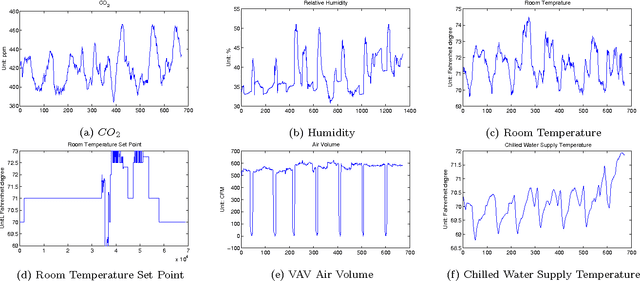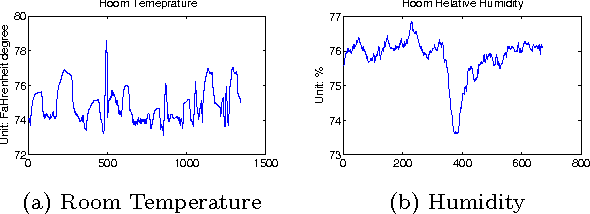Arka Bhattacharya
Sensor-Type Classification in Buildings
Sep 01, 2015



Abstract:Many sensors/meters are deployed in commercial buildings to monitor and optimize their performance. However, because sensor metadata is inconsistent across buildings, software-based solutions are tightly coupled to the sensor metadata conventions (i.e. schemas and naming) for each building. Running the same software across buildings requires significant integration effort. Metadata normalization is critical for scaling the deployment process and allows us to decouple building-specific conventions from the code written for building applications. It also allows us to deal with missing metadata. One important aspect of normalization is to differentiate sensors by the typeof phenomena being observed. In this paper, we propose a general, simple, yet effective classification scheme to differentiate sensors in buildings by type. We perform ensemble learning on data collected from over 2000 sensor streams in two buildings. Our approach is able to achieve more than 92% accuracy for classification within buildings and more than 82% accuracy for across buildings. We also introduce a method for identifying potential misclassified streams. This is important because it allows us to identify opportunities to attain more input from experts -- input that could help improve classification accuracy when ground truth is unavailable. We show that by adjusting a threshold value we are able to identify at least 30% of the misclassified instances.
Evolution and Computational Learning Theory: A survey on Valiant's paper
Dec 17, 2013Abstract:Darwin's theory of evolution is considered to be one of the greatest scientific gems in modern science. It not only gives us a description of how living things evolve, but also shows how a population evolves through time and also, why only the fittest individuals continue the generation forward. The paper basically gives a high level analysis of the works of Valiant[1]. Though, we know the mechanisms of evolution, but it seems that there does not exist any strong quantitative and mathematical theory of the evolution of certain mechanisms. What is defined exactly as the fitness of an individual, why is that only certain individuals in a population tend to mutate, how computation is done in finite time when we have exponentially many examples: there seems to be a lot of questions which need to be answered. [1] basically treats Darwinian theory as a form of computational learning theory, which calculates the net fitness of the hypotheses and thus distinguishes functions and their classes which could be evolvable using polynomial amount of resources. Evolution is considered as a function of the environment and the previous evolutionary stages that chooses the best hypothesis using learning techniques that makes mutation possible and hence, gives a quantitative idea that why only the fittest individuals tend to survive and have the power to mutate.
 Add to Chrome
Add to Chrome Add to Firefox
Add to Firefox Add to Edge
Add to Edge